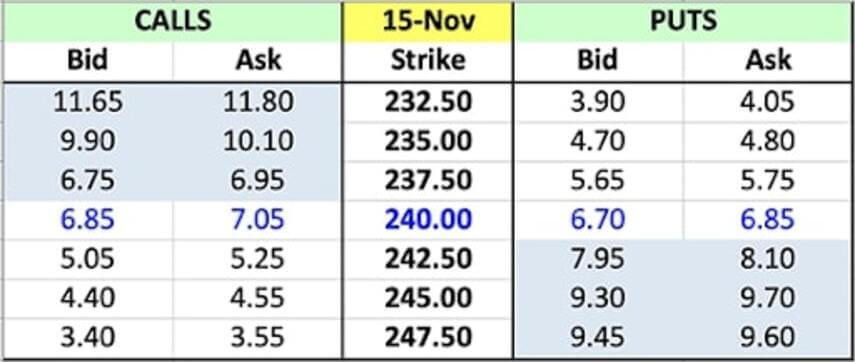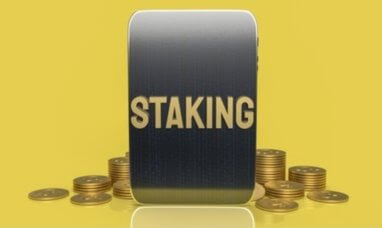Learning how to trade options is a great way to unlock a whole new dimension of the stock market or any other financial market. Options offer a way to extend, or leverage, the value of your investment without taking on a huge risk. This makes them appealing to investors at every level.
They also allow you to protect your stock holdings, taking on a whole other side of investments as a stockbroker would, and to access a wide range of trading strategies for beginners and advanced strategies that go beyond typical directional stock investments.
Options give you the ability to be creative and more advanced with your investing, and this means you can make more money using less of your capital. However, trading options without a good understanding can lead to losses.
Let’s explore the basics of option contracts, and get you ready to use them in your portfolio.
What Are Options?
An option is a type of derivative, a financial instrument that is based on the value of an asset. In this case, a stock option is a derivative based on the value of a stock.
An option allows you to buy or sell an asset at a fixed price within a certain period of time.
That’s it. However, based on this simple definition, there is a lot of value and versatility that we can access with options. A stock option allows you to buy or sell 100 shares of the underlying stock within a certain period of time, typically within 30 days.
Why Trade Options?
The main appeal is that an option is far less expensive or risky than buying 100 shares outright.
Think about it, if you buy 100 shares and the trade goes wrong, you stand to lose a lot of money. If you buy the option for 100 shares and the trade goes wrong, then you don’t have to use or exercise the option and actually own the shares.
Whenever an option trade goes wrong, you only lose the cost to buy the option itself. This cost is an upfront payment that is a fraction of the actual share price. This upfront payment to purchase an option contract is called a premium.
What Kind of Options Can You Trade?
Just like normal directional stock investments, there are two types of option contracts.
If you buy a stock, you want it to go up in price. A call option is a contract to buy a stock at a fixed price. Similarly, if you short sell a stock, you want it to go down in price. A put option is a contract to sell a stock at a fixed price.
Calls
Someone who buys a call option wants the stock price to rise above the fixed price of their option contract. This fixed stock price is called the strike price.
Say you bought a call option for 100 shares of company X at a strike price of $10 and the stock price rose to $20. You could exercise your contract to buy 100 shares for $1,000. You now own $2,000 worth of stock for only $1,000.
This investment would make you $1,000 profit if you sold your shares. However, it’s only worth your time and money if the profit is more than the premium. The premium is what you paid at the beginning to get the contract, so that is the threshold for you to make a net profit.
Puts
Someone who buys a put option wants the stock price to fall below the strike price of their option contract. This means they can sell their stock for more money than it’s worth.
Say you bought a put option for company X at a strike price of $20 after it rose to $20 as in the previous example. If the stock price falls back to $10, you could exercise your put option and sell your shares at a higher price of $20.
This means you sell your shares for $2,000 while they are only worth $1,000. You could buy the shares back at $1,000 and still collect a $1,000 profit from the difference. You can see how a put option can be used to protect, or hedge, the value of your investment in case something goes wrong.
Option Strategies
Now this is where options get really interesting. An option strategy allows you to combine option contracts like building blocks in order to accomplish unique things. There is a lot of room for creativity here, and there are a bunch of interesting names for different strategies.
One basic option strategy is a married put. This means buying a stock normally and then buying a put option at the same time. So say you bought 100 shares of company X at $20 for $2,000 and also bought a put option with a strike price of $20.
If the stock price goes up, you’d profit as you normally do by owning stock. If it goes down below $20, then you can still sell your stock at $20 by exercising your put option. This way your investment is protected from loss by paying a small premium for the put option.
How to Get Started
Getting started with options is easy, you just need a retail broker that offers options and approves your account for trading them. However, you need to be able to read option chains.

Source: WalletBrain.com
This is a simplified example of a table that shows prices for option contracts, also known as an option chain. You can see the strike price in the center for various contracts. The row in blue represents the current price of the underlying stock.
So, in this case, the underlying stock is at $240. The bid is the price that you’ll get for selling the option. We’ll talk more about selling options in a bit. The ask is the price that you’ll get for buying the option.
Buying Options
For example, if you thought the stock price will go up, you could buy a call option at a strike price of $240 for an ask of $7.05 per share.
As each contract is worth 100 shares, this would cost $705 to buy one call option. If you just bought the 100 shares normally, it would cost $24,000. You paid only 2.9% of the cost to buy the shares at that price, but you’ll still need $24,000 to exercise the contract if it goes up.
If the stock price goes up to $250, you make $10,000 while only risking $705. While you need $24,000 to exercise the contract, that’s a 1,418% return on the premium. If the stock price goes down, the option ends or expires worthless and you only lose the $705 premium.
While this is a very expensive stock, there are much cheaper shares and options you can buy. However, you can see how options present huge savings for minimal risk. Buying the shares outright could lead to large losses, but only buying an option minimizes the potential loss.
Selling Options
Instead of buying a call or put option, you can sell the option to someone else. This is called option writing and the seller is called the writer. Before computers and electronic trading, an option seller would write the terms on a physical paper contract and sell it to another trader.
Now, most option contracts actually expire worthless. It takes a skilled option buyer to find good contracts and make those big profits. That’s the mathematical reality of options.
However, an option writer is kind of like the house in a casino.They make cash instantly by writing or selling the contract for an upfront premium, but if the buyer wins and exercises the contract, they have to meet their end of the bargain and provide the stock or buy the shares.
A popular strategy is a covered call. Say you buy 100 shares of the above company normally. If you want to take profit at a fixed price or make some extra money, then you could sell a call option at the strike price of $247.50 at the bid price of $3.40 per share.
At $3.40, you would sell or write the option for $340 and that cash goes instantly into your account. However, if the stock price goes up to $247.50, then the buyer will likely exercise their contract and buy your stock at the strike price. Now, you already own the stock, so you still make a profit of $750 for selling your shares plus your premium of $340 for a total profit of $1,090.
So, it’s a win-win situation. This is called a neutral strategy because you make money either way. However, your normal stock profits are limited at the strike price of the option. If the price of the stock goes down, you still take a loss as you normally would by buying shares.
Option Spreads
You may be thinking, can’t you buy and sell options at the same time? You certainly can, and this adds another layer of complexity and possibilities for option contracts. This strategy is called option spreads and can be used to reduce your premiums or take special strategies.
One basic spread is the bull call spread. This involves buying one call option at a certain strike price and selling another call option at a higher strike price. So, we just combine the two above examples. Say you bought a call option at $240 and sold a call option at $247.50.
So, the call option at $240 would cost $705 just like before, but you’d make $340 from selling the call option at $247.50. In total, your premium cost on buying the call is reduced to $365.
That’s great! You paid only about half price for an option that is already much cheaper than buying the share outright. However, your upside potential is capped at the strike price of $247.50. The bull call spread will reduce premium cost while limiting upside potential.
If the stock price goes down, you only lose $365 instead of the $705 as you would before. If it goes up to $247.50, you exercise your call and buy the stock to sell at $247.50 to the buyer that purchased a $247.50 call from you.
So you make $750 profit minus the total premium of $365 for a maximum profit of $385. That’s a maximum return of 105% on the initial premium. Not bad, especially considering that you are risking $365 rather than the $24,000 to buy the shares outright. Your cost to take the position is reduced by 98.47% and your upside is increased from 3.12% to 105%.
However, most importantly, remember that you still need $24,000 in your account to buy the shares and exercise the call option that you own. While options increase your buying power and reduce your risk, you still need capital to finance the option.
Featured Image: Twenty20








